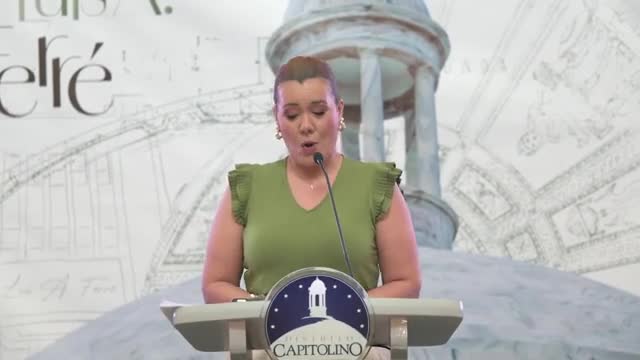Capitolio de Puerto Rico finaliza restauración histórica tras años de trabajo y desafíos estructurales
November 08, 2024 | House of Representatives, House, Committees, Legislative, Puerto Rico
This article was created by AI summarizing key points discussed. AI makes mistakes, so for full details and context, please refer to the video of the full meeting. Please report any errors so we can fix them. Report an error »

The Puerto Rican Capitol, a historic and cultural landmark, has recently undergone significant restoration, particularly to its iconic dome. This project, which took over two years to complete, faced numerous challenges, including working under the sun and at great heights, all while adhering to strict conservation protocols. The results have exceeded expectations, revitalizing a structure that symbolizes democracy and the free expression of the Puerto Rican people.
The Capitol, inaugurated in 1929, was originally envisioned by Luis Muñoz Rivera, who emphasized its role as a bastion of liberty. The building, known for its neoclassical architecture and white marble exterior, is one of only three capitols in the United States to be entirely clad in marble. The restoration not only preserved its historical integrity but also addressed critical structural issues that had plagued the building for years, including severe leaks and safety concerns.
In addition to the Capitol, the Luis A. Ferré building, which houses legislative offices and assembly rooms, has also seen extensive renovations. These updates included modern fire safety measures and structural repairs, ensuring the safety and functionality of the facility. The restoration efforts were led by various architectural and engineering firms, showcasing a collaborative approach to preserving Puerto Rico's legislative heritage.
As the community reflects on these improvements, the significance of the Capitol as a symbol of governance and civic pride remains paramount. The successful completion of these projects marks a new chapter for Puerto Rico's legislative buildings, reinforcing their role in serving the public and upholding democratic values.
The Capitol, inaugurated in 1929, was originally envisioned by Luis Muñoz Rivera, who emphasized its role as a bastion of liberty. The building, known for its neoclassical architecture and white marble exterior, is one of only three capitols in the United States to be entirely clad in marble. The restoration not only preserved its historical integrity but also addressed critical structural issues that had plagued the building for years, including severe leaks and safety concerns.
In addition to the Capitol, the Luis A. Ferré building, which houses legislative offices and assembly rooms, has also seen extensive renovations. These updates included modern fire safety measures and structural repairs, ensuring the safety and functionality of the facility. The restoration efforts were led by various architectural and engineering firms, showcasing a collaborative approach to preserving Puerto Rico's legislative heritage.
As the community reflects on these improvements, the significance of the Capitol as a symbol of governance and civic pride remains paramount. The successful completion of these projects marks a new chapter for Puerto Rico's legislative buildings, reinforcing their role in serving the public and upholding democratic values.
View full meeting
This article is based on a recent meeting—watch the full video and explore the complete transcript for deeper insights into the discussion.
View full meeting